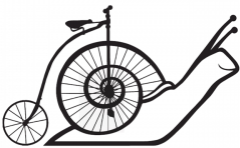In light of Mark’s recent cancer diagnosis, many people are undoubtedly shocked that we would entertain the idea of going on our intended bike trip. Only one friend had the courage to express how screwed up we are for putting the trip before treatment, but I’m sure others are quietly nursing the same bewilderment.
Most people react to the word “cancer” with shock and fear, and the understandable reaction is a panicky, “Get it out!” And especially since papillary thyroid cancer is a very treatable cancer – 95% survival rate, approximately, why not do everything possible to ensure that you’re in that 95%?
We have learned that as cancer detection techniques improve, we’re detecting much higher incidences of cancer, especially papillary thyroid cancer. Early detection and treatment is a good thing, right? Well, maybe not. It turns out that although the incidence of thyroid cancer has skyrocketed in the last few decades (making it one of the top ten diagnosed cancers in America), mortality rates have not changed. If early detection and treatment worked, we’d expect to see a decrease in mortality rates. But since we don’t, the statistics indicate that we are treating indolent cancers that would never have harmed us in the first place. (See these articles in the New York Times for more on this emerging science.)
Still, many would argue that treatment is better than sitting with latent cancer. Cut it out of the body, and decrease your risk being in that dreaded 5%. However, treatment carries its own risk. Living on thyroid hormone replacement drugs is never as good as living with a fully functioning thyroid. Additionally, surgery carries the risk of damaging vocal cord nerves (rendering you hoarse, or even speechless for the rest of your life), or of destroying tiny but critical glands called the parathyroids (for which there is no good treatment).
Each potential follow-up treatment (radioactive iodine, chemotherapy, etc.) then carries with it additional risks, including new, more serious types of cancer than the original thyroid cancer. If these side effects occur, then the treatment is definitely worse than the disease.
While there is emerging science to say that tiny cancerous nodules are good candidates for the “watch and wait” approach to treatment, there is no science regarding Mark’s nodule size (small/medium). Just five to 10 years ago, surgeons refused to consider active monitoring of tiny nodules, but this is quickly becoming the standard of treatment for them. Who’s to say that tomorrow, small/medium nodules won’t be given the same regimen?
So, on the flip side, if this cancer isn’t likely to kill you or even give you any symptoms, but we know treatment absolutely does have side effects, why treat? Because we don’t have science to say which patients are likely to fall into the 5% and which aren’t.
Ultimately, it is Mark’s decision. The surgeon expects, but of course does not promise, that Mark will have a good outcome, even if we wait 6 or 7 months to operate. But can Mark live with the knowledge that he has a cancerous growth in his neck? Not everybody could. But Mark thinks he can.

